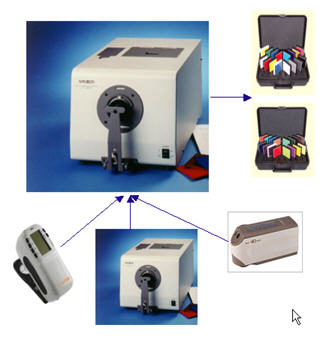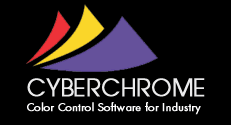 One of the latest advancements in color technology is instrument profiling. Instrument profiling is used to make a population of spectrophotometers read to within a tighter specification of each other thereby improving Inter-Instrument Agreement. A master instrument is used as the reference point and all other instruments are “cloned” to match this master instrument. A complex set of equations is used to profile or “correct” a target instrument so that its spectral data mimics that of the master. After profiling, all data taken on the target instrument is now corrected to match the master. The result is much tighter agreement between instruments which leads to fewer disputes over whether the color match is acceptable and faster acceptance and approval of submits.
One of the latest advancements in color technology is instrument profiling. Instrument profiling is used to make a population of spectrophotometers read to within a tighter specification of each other thereby improving Inter-Instrument Agreement. A master instrument is used as the reference point and all other instruments are “cloned” to match this master instrument. A complex set of equations is used to profile or “correct” a target instrument so that its spectral data mimics that of the master. After profiling, all data taken on the target instrument is now corrected to match the master. The result is much tighter agreement between instruments which leads to fewer disputes over whether the color match is acceptable and faster acceptance and approval of submits.
Why do I need to profile my spectrophotometer?
In order for electronic standards to “work” within your supply chain, you need to be able to recall a stored standard, measure the actual stored standard on another instrument and have a resulting DE of 0.15 or less. The number of 0.15 is dependent on how tight your tolerances are. If you are trying to supply a color match that is <0.5DE, then you certainly don’t want to have half of that deviation taken up by lack of inter-instrument agreement. A good rule of thumb is that no more than 25% of your tolerance should be given up to instrument variables (such as INTER-INSTRUMENT AGREEMENT, sample repeatability, and instrument repeatability). So if your tolerance is DE=1.0, then you can live with measurement uncertainty of up to 0.25DE. If your tolerance is DE<0.5, then you can live with an uncertainty of no more than 0.125. So as tolerances get tighter and customers get more critical of color, INTER-INSTRUMENT AGREEMENT becomes more important. Instrument profiling can help you achieve the INTER-INSTRUMENT AGREEMENT that you need in order to meet these tight tolerances.
- How do I do this?
- What’s needed to begin profiling the instruments in mycolor network or supply chain?
- How often do I need to profile?
- What benefits will I receive for my efforts?
You can get answers to these questions, learn more about instrument profiling and download a white paper on the subject by clicking the button below.

